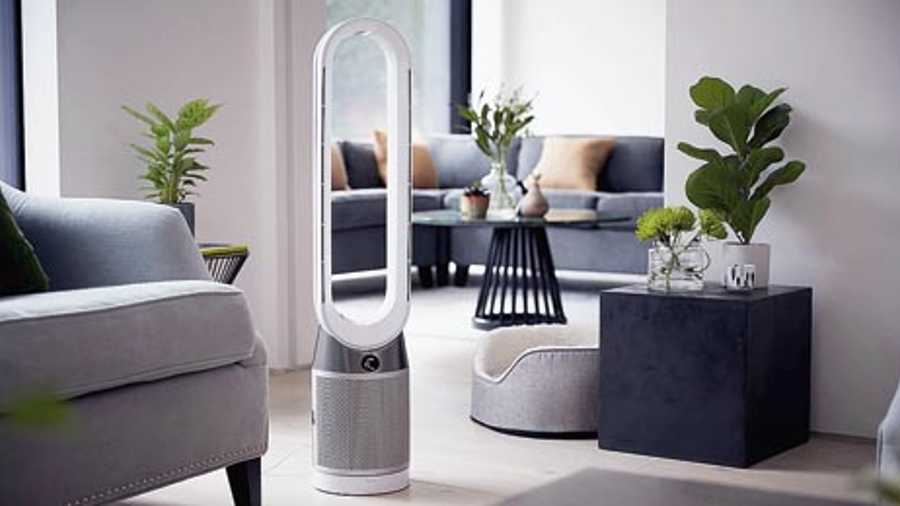When technology is engineered for real spaces and works properly in the home, it’s a long-term investment for a healthier space,” says Sam Taylor, design engineer in RDD at Dyson, UK. The British technology company, whose design combines functionality with artistic beauty, has become a standard when it comes to household appliances. Its founder James Dyson has done for household appliances, like the vacuum cleaner and air purifiers, what Steve Jobs and his friend Steve Wozniak did for the personal computer. We are once again at that time of the year when complains about air quality inside and outside our homes becomes a part of the conversation. What’s causing the problems? What are the solutions? Here’s what Sam told us.

Sam Taylor, design engineer in RDD at Dyson, UK
How does one identify air quality problems?
The quality of air is measured using an Air Quality Index or AQI. There are many AQIs globally, some developed by independent organisations and others by national bodies. What is important to remember is that AQIs provide a guideline of the severity of air quality over a specific geography at any one time, but they won’t be useful to understand your own personal pollution exposure at an individual level.
In India, the Central Pollution Control Board is executing a nation-wide programme of ambient air quality monitoring known as National Air Quality Monitoring Programme (NAMP). The objectives of NAMP are to determine status and trends of ambient air quality and that is how air quality problems are ascertained across the country. One can check the quality of air in their surroundings through CPCB’s website as well.
However, the need for clean air is not just an outdoor issue. The air in our homes can contain myriad substances, from particles like dust, pet dander and allergens to gases, volatile organic compounds (VOCs), nitrogen dioxide (NO2) and benzene.
To help reduce indoor air pollution, try using natural cleaning products to help lower the amount of VOCs in your indoor air, and avoid leaving windows open for too long to try and reduce potential gases from outdoors, like NO2 and sulphur dioxide (SO2) into your home. These steps can help improve the quality of air at home.
Given the pandemic, we have been spending most of our time indoors but indoor air quality is something that’s largely ignored.
Even before the pandemic, many of us were spending upwards of 90 per cent of our time indoors. Since we spend so much of our time inside, it becomes even more imperative for us to be aware that there is a plethora of air pollutants that can accumulate inside our homes.
Dyson engineers along with SGS China, an independent advanced testing establishment, conducted research on indoor air quality in Delhi NCR homes using Dyson technology. The study found that the air we breathe at home can contain large amounts of indoor pollutants including formaldehyde, bacteria, pollen, mould spores, dust mites, pet hair and dead skin cells. In addition, there are also diesel exhaust fumes, tobacco, soot, heavy metals and toxic organic compoundspresent in the air. Our day-to-day activities like cooking and cleaning and everyday household objects like wooden furniture, candles, gas cookers, cleaning sprays, house plants and pets, can also release pollutants inside a home where they can build up.
How would you describe hidden air pollution to readers?
There are several indoor pollution sources, which may release pollutants like PM10, PM2.5, VOCs and NO2 into the air. These are a result of regular human behaviour and activities that we follow in our everyday life, like cleaning homes using disinfectants, the use of incense sticks, cooking and especially deep frying, or smoking — these can be a major source of airborne particles that contribute to pollutants in households. These pollutants are often not visible to the naked eye so it can be difficult to know when to take action.
What are some of the solutions that are there to tackle the air in the house?
As indoor pollution can be invisible, it can create an unhealthy indoor environment. One can follow these tips to try and keep your home free of pollution.
Use cleaning products wisely: Some of the VOCs found in our homes can come from the chemicals in cleaning products we use on kitchen surfaces, bathrooms and windows. Using natural cleaning products can help lower the amount of VOCs in your indoor air.
Vacuum regularly: A research conducted in Indian households shows that bacteria, dust mite and dog and cockroach allergens were found where we sleep, sit, play and travel. Keep your carpets, hard floors, upholstery and surfaces free of dust and pet hair — most effectively by vacuuming. When you sit on the sofa or plump up a cushion, you might also notice a dust cloud. Vacuuming carpets, curtains and soft furnishings regularly is an easy way to decrease particulate pollution at home.
Scents in moderation: Some of the things we might enjoy at home like scented candles, can also be sources of indoor air pollution. Rather than avoiding them completely, try lighting candles only in moderation and ensure that you ventilate the room, or use a purifier afterwards to help remove particulate matter from the air.
Be wary when letting in “fresh air”: If you live next to a busy road or train line, opening the window can allow outdoor pollution, gases like NO2 and SO2, into your home.
Ensure ventilation while cooking: Frying with oil can create particulate pollution and using a gas stove can also create gaseous pollutants like NO2. When cooking, try to ensure that kitchen appliances are vented to outdoors, or open windows if the air outdoors is clean enough to encourage polluted air to flow out, or use mechanical ventilation like a purifying fan which can assist by filtering out pollutants.
Is there a particular time in the year — say October/November — when indoor air quality is at its worst? This is usually the time when we start talking of smog.
With the onset of winters, the air quality worsens every year. It peaks during the first few weeks of November. Meteorological conditions, local pollution, stubble burning, and festive season all contribute to the rise in pollution levels.
With regards to indoor air quality, it is a year-round concern. Regular human behaviour and activities that we follow in our everyday life like cleaning homes using disinfectants, the use of incense sticks, cooking and especially deep frying, smoking and so on; can be sources of airborne particles that contribute to pollutants in households.
Long term effects of having a useful smart product?
The pandemic has raised global awareness about the air that we breathe and role of innovation and technology in bettering our lives. When technology is engineered for real spaces and works properly in the home, it’s a long-term investment for a healthier space.
Air purifiers come in various shapes and sizes, remove different kinds of air pollutants in your homes, come with an array of specifications, and offer different features. Better air quality monitoring, filters to remove particle pollutants from the air and a healthy life all come free with a purchase of a smart product.
It is both about the value that a product brings and the technology behind it that makes it superior. A machine should solve a problem both in the short term and long term.










